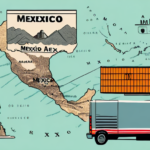Introduction to UPS Ground Shipping
When it comes to shipping goods, businesses must consider various factors to ensure cost-effective, reliable, and timely delivery. UPS Ground is a popular option for freight shipping due to its extensive coverage, affordable pricing, and flexible service options. However, understanding the factors that influence UPS Ground freight pricing is essential for optimizing shipping costs.
The Basics of UPS Ground Shipping
UPS Ground is a preferred shipping method for businesses transporting large and bulky items over long distances. This service covers all 50 states in the U.S., Puerto Rico, Canada, and Mexico. While transit times for UPS Ground are generally longer than air services, they come at a significantly lower cost. Businesses can track their shipments using UPS tracking tools to monitor delivery progress and ensure packages arrive on time.
Coverage and Service Areas
UPS Ground provides comprehensive coverage across North America, making it a reliable choice for businesses with broad geographical shipping needs. The service ensures that packages reach remote areas without compromising on delivery standards.
Tracking and Reliability
With a robust tracking system, businesses can monitor their shipments in real-time, ensuring transparency and accountability. UPS Ground boasts a 99% on-time delivery rate, reinforcing its reputation for reliability. Additionally, the service offers a money-back guarantee for packages not delivered within the estimated timeframe, providing extra assurance to businesses.
Different Types of Freight Pricing
UPS Ground offers several freight pricing options tailored to different business needs:
- Billed Weight: Shipping rates are calculated based solely on the package's weight.
- Dimensional Weight: Rates are based on both the package's dimensions and weight.
- Minimum Billable Weight: A minimum weight is applied to calculate shipping rates, regardless of the actual package weight.
The pricing structure varies depending on factors like weight, dimensions, and distance to the destination. Additionally, the type of items being shipped can influence costs, especially if special handling or packaging is required.
Special Handling and Packaging
Items that are hazardous or fragile may incur additional fees or require special packaging to ensure safe delivery. It's crucial for businesses to communicate any special requirements to UPS to prevent delays and additional costs.
Factors Affecting UPS Ground Freight Pricing
Several key factors influence the cost of UPS Ground freight shipping:
- Distance: Longer distances typically result in higher shipping costs.
- Weight: Heavier packages increase the shipping rate.
- Dimensions: Larger packages or shipments require more space, affecting the rate.
- Special Handling: Services like temperature control add to the overall cost.
Additionally, the type of delivery service selected—standard, guaranteed, or expedited—can affect pricing. Faster delivery options come at a premium, and adding insurance to shipments further increases costs. Businesses should weigh these factors to choose the most cost-effective shipping solution that meets their needs.
Service Level Selection
Choosing the appropriate service level is vital for balancing cost and delivery speed. Standard services are more economical, while expedited options cater to urgent shipping needs. Evaluating shipment priorities helps businesses make informed decisions.
How to Calculate UPS Ground Freight Charges
Businesses can estimate UPS Ground freight charges using the UPS online shipping calculator, which considers package weight, dimensions, and destination. For precise estimates based on specific shipment requirements, contacting UPS customer service is recommended.
It's important to account for potential additional fees, especially when shipping hazardous materials or oversized packages. Reviewing UPS's shipping guidelines ensures awareness of any extra charges.
Utilizing UPS’s tracking system also allows businesses to monitor shipments in real-time, making necessary adjustments to shipping plans as needed. Additionally, UPS offers insurance options to protect shipments from loss or damage during transit.
Tips for Reducing UPS Ground Freight Costs
Businesses can implement several strategies to lower their UPS Ground shipping costs:
- Consolidate Shipments: Combining multiple smaller shipments into a single larger package can reduce overall shipping expenses.
- Use Lightweight Packaging: Opting for lightweight packaging materials decreases the total shipment weight, leading to cost savings.
- Plan Ahead: Scheduling shipments in advance can take advantage of lower rates and avoid expedited shipping fees.
Additionally, negotiating rates with UPS based on shipping volume and frequency can yield significant discounts. Exploring alternative shipping options, such as FedEx or USPS, allows businesses to compare rates and select the most economical choice.
Leverage Volume Discounts
Businesses with high shipping volumes may qualify for volume discounts, reducing the per-package cost. Engaging with a UPS account representative can help identify available discounts and negotiate favorable rates.
Comparing UPS Ground to Other Shipping Options
When selecting a freight shipping method, businesses can choose from UPS Ground, air freight, sea freight, and other ground services. UPS Ground stands out for cost-effectiveness within the U.S., offering reliable service at competitive rates. Comparing factors such as transit times, costs, and service reliability helps businesses determine the best shipping method for their needs.
With a 99% on-time delivery rate and comprehensive tracking capabilities, UPS Ground provides businesses with confidence in their shipping process. However, evaluating alternative options may be necessary for time-sensitive or international shipments.
Alternative Shipping Methods
Air Freight: Offers the fastest delivery times but at a higher cost, suitable for urgent or high-value shipments.
Sea Freight: Ideal for large, heavy shipments requiring cost-effective long-distance transportation, albeit with longer transit times.
Alternative Ground Services: Providers like FedEx and USPS offer varying service levels and pricing structures, providing additional choices for businesses.
Understanding Delivery Time Estimates for UPS Ground Shipping
UPS Ground delivery times typically range from 1 to 5 business days, depending on the package's origin, destination, and the chosen shipping method. Businesses can utilize the UPS Ground service page to obtain specific delivery estimates based on their shipment details.
It's important to recognize that unforeseen factors such as weather conditions, package size, and delivery location can influence delivery times. In cases of natural disasters or transportation disruptions, delays may occur.
To enhance security and assurance, businesses can opt for additional services like signature confirmation or insurance. These services add layers of protection but may extend delivery times and incur extra costs.
The Pros and Cons of Using UPS Ground with Freight Pricing
UPS Ground offers several advantages and disadvantages for businesses:
- Pros: Affordable pricing, extensive coverage, reliable and efficient service, and comprehensive tracking tools.
- Cons: Longer transit times compared to air services, limited visibility in customs for international shipments, and restrictions on hazardous materials.
The availability of additional services such as delivery confirmation, signature confirmation, and insurance enhances the value of UPS Ground for businesses shipping valuable or fragile items.
However, businesses requiring rapid or time-sensitive deliveries might find UPS Ground less suitable, as faster shipping options may be necessary to meet tight deadlines.
Common Mistakes to Avoid When Using UPS Ground with Freight Pricing
To ensure optimal use of UPS Ground freight pricing, businesses should avoid the following mistakes:
- Not double-checking shipping labels and addresses, leading to delivery errors.
- Failing to fully understand the pricing structure, including weight and dimension limits.
- Improperly packing and securing packages, risking damage during transit.
- Neglecting to insure packages for their full value, leaving shipments vulnerable to loss or damage.
Additionally, businesses should take advantage of available discounts and promotions. UPS frequently offers volume discounts and special rates for specific industries, which can result in significant cost savings. Regularly reviewing UPS’s promotions and discounts ensures businesses maximize their shipping budgets.
Effective Labeling and Documentation
Accurate labeling and proper documentation are critical to prevent delays and ensure shipments reach their intended recipients without issues. Utilizing UPS's labeling tools and adhering to packaging guidelines can enhance shipping efficiency.
Proper Packaging Techniques
Investing in quality packaging materials and following best practices for packing can minimize the risk of damage. This includes using appropriate cushioning, secure sealing, and adhering to UPS’s packaging standards.
Conclusion
Understanding the intricacies of UPS Ground freight pricing enables businesses to optimize their shipping strategies effectively. By considering factors such as distance, weight, dimensions, and service levels, and by implementing cost-saving measures like consolidating shipments and negotiating rates, businesses can achieve reliable and cost-effective shipping solutions. Avoiding common mistakes and leveraging available discounts further enhances the efficiency of using UPS Ground for freight needs.






















